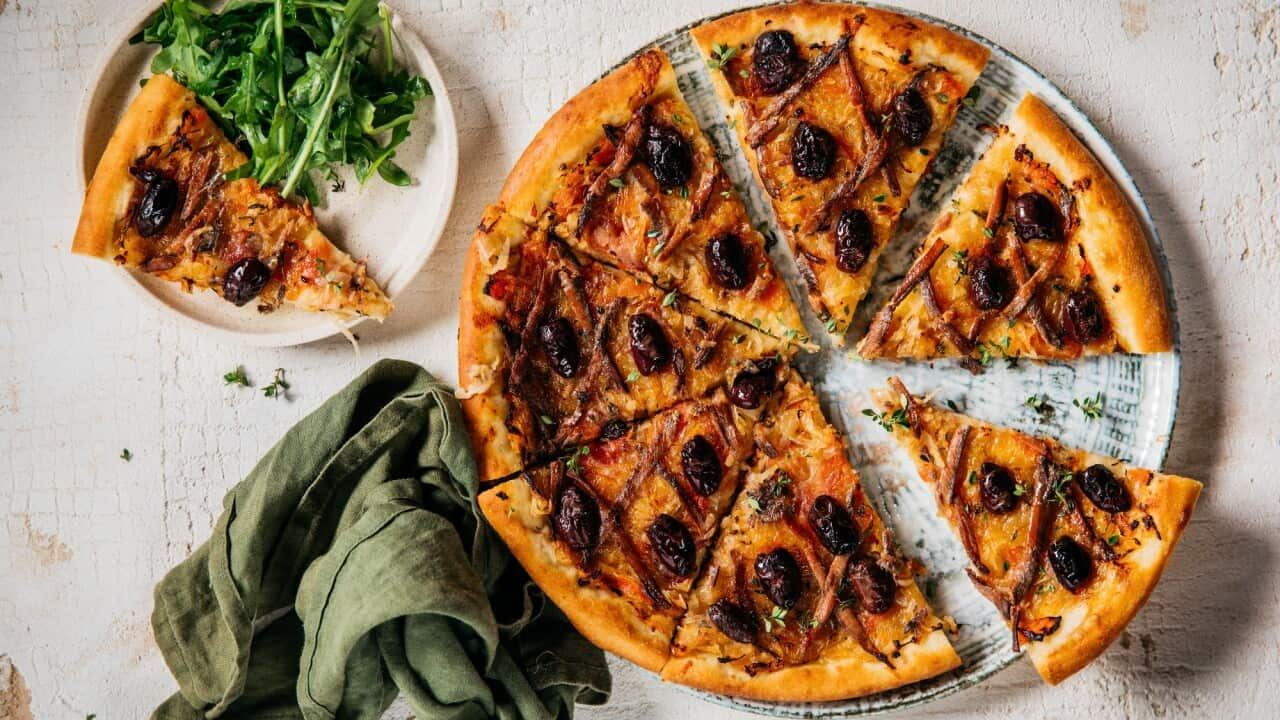Dim-sum confessions? I’ll start.
I was the kid who would only eat the centre of an . I’d carefully run a chopstick between the bright yellow filling and the flaky shell, then scoop out the custard with dogged determination, grinning triumphantly as I stuffed it into my mouth in one huge spoonful.
The golden custard centre was the best part of the egg tart – gleaming like coins in a video game. It was creamy, sweet and light. I craved how it melted on my tongue. Maybe my love for egg tart filling was a misplaced desire for (a chocolate custard that I loved, but was rarely allowed to have, despite the influence of early 2000s TV advertising).
The pastry shell paled in comparison. It was dry, flaky, and bland.
My grand-uncle laughs when my mum bemoans her frustration at my fussy childhood dim-sum antics. She raises her voice over the hum of the air conditioning, one hand against the roof of the van, steadying her weight as we hurtle towards my grand-uncle’s bakery in . There’s three generations between us and double the number of dialects (of which, I am fluent in exactly none), but food memories and tales of picky children need no translation.
The sticky humidity of Penang unceremoniously greets us as we step out of our air-conditioned haven and into the bakery. Bakers in T-shirts and shorts surround a number of mechanical whisks, weights and metal trays, all glinting in the afternoon sun. The casual lull of their conversation suggests that the bakery is more of a family home than a workplace. That ease belies their mastery of their craft: an army of hands diligently kneading, folding and measuring an array of baked goods without missing a beat of laughter.
Bakers in T-shirts and shorts surround a number of mechanical whisks, weights and metal trays, all glinting in the afternoon sun. The casual lull of their conversation suggests that the bakery is more of a family home than a workplace. That ease belies their mastery of their craft: an army of hands diligently kneading, folding and measuring an array of baked goods without missing a beat of laughter.

Inside the bakery. Source: Ange Seen Yang
I watch as even mounds of pale dough turn into fluffy pineapple buns and swirls of brown pepper paste are folded into biscuit dough, destined to become crispy pepper biscuits. are lined up at the far end of the counter, their golden-brown domes making them look like miniature snow globes.
My grand-uncle weaves through, focused solely on his target: a tray lined with rows of egg tarts next to the oven. They gleam like sunflowers on a tray, caramelised sugar kissing their edges brown. He unmoulds them one by one, out of the tray, into a paper patty pan, straight on the counter. His fingers do not flinch, all too familiar with the oven’s heat. He hands one to me, and I immediately jerk at the unexpected warmth, barely saving the egg tart from an ungraceful tumble to the ground.
The first bite into that fresh egg tart is a revelation.  The warm custard is cradled gently by a biscuit-like pastry that melts wonderfully in my mouth. It’s delicate and subtly sweet. I instantly want more.
The warm custard is cradled gently by a biscuit-like pastry that melts wonderfully in my mouth. It’s delicate and subtly sweet. I instantly want more.

The egg tart is a bakery star. Source: Ange Seen Yang
After that, it seems sacrilegious to separate the custard from its crust. Suddenly, the doors blew open to the world of egg tarts. In Hong Kong, accompanied me down the packed streets of . A short ferry ride to Macau introduced me to the Portuguese egg tart, its caramelised topping – almost burnt toffee in colour – was deliciously sweet, crunchy and moreish all in one.
Of course, I now eat the entirety of the egg tart: custard, pastry crust and all. I’ve been lured by other custard-adjacent tarts – some featuring Hokkaido cheese, others mixed with matcha or topped with swirls of raspberry.
The warm custard is cradled gently by a biscuit-like pastry that melts wonderfully in my mouth. It’s delicate and subtly sweet. I instantly want more.
When the cravings get desperate, I even try to make one with frozen pastry. Sure, there’s probably an allegory about how an egg tart is a reflection on food, power, migration and culture, or perhaps how, above all, eggs and sugar are a perfect match across many cuisines.
But in the end, I find myself returning to the simple egg tart. And admittedly, the flaky shell is as important as the custardy centre – without it, how can we say that it’s an egg tart as opposed to a custard? So yes, I’m a convert. Secretly though, the centre is still the best part to me.








